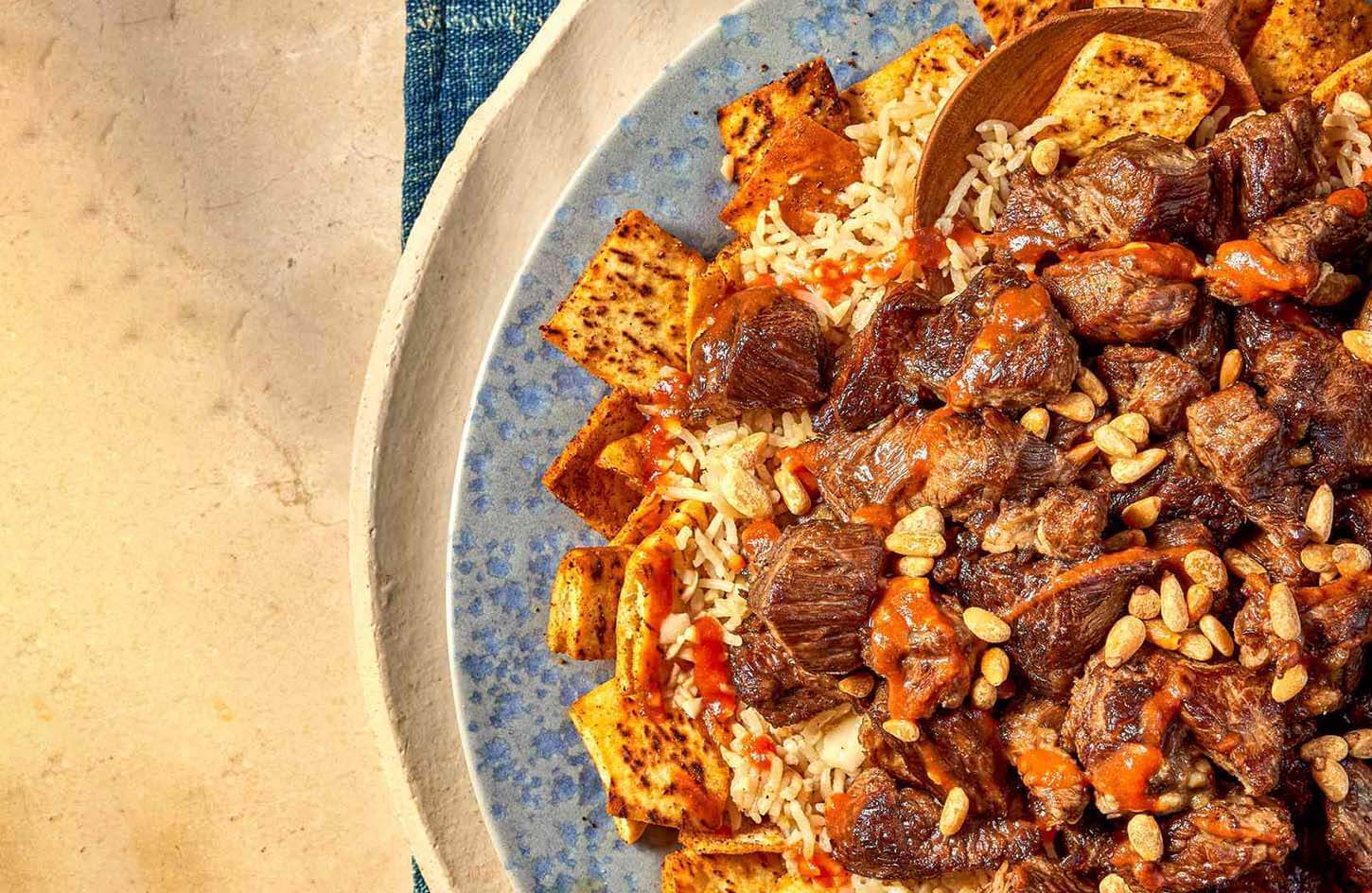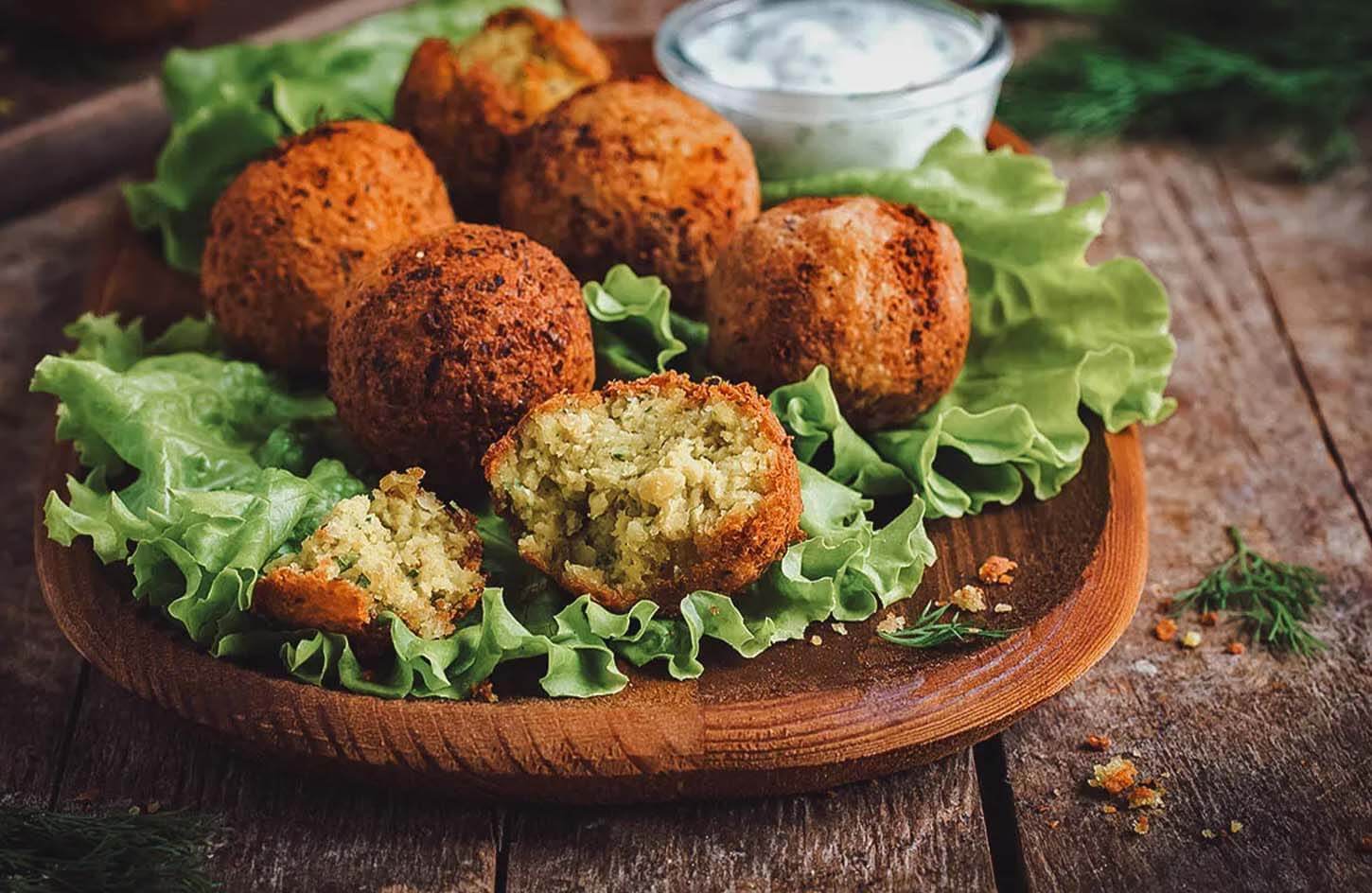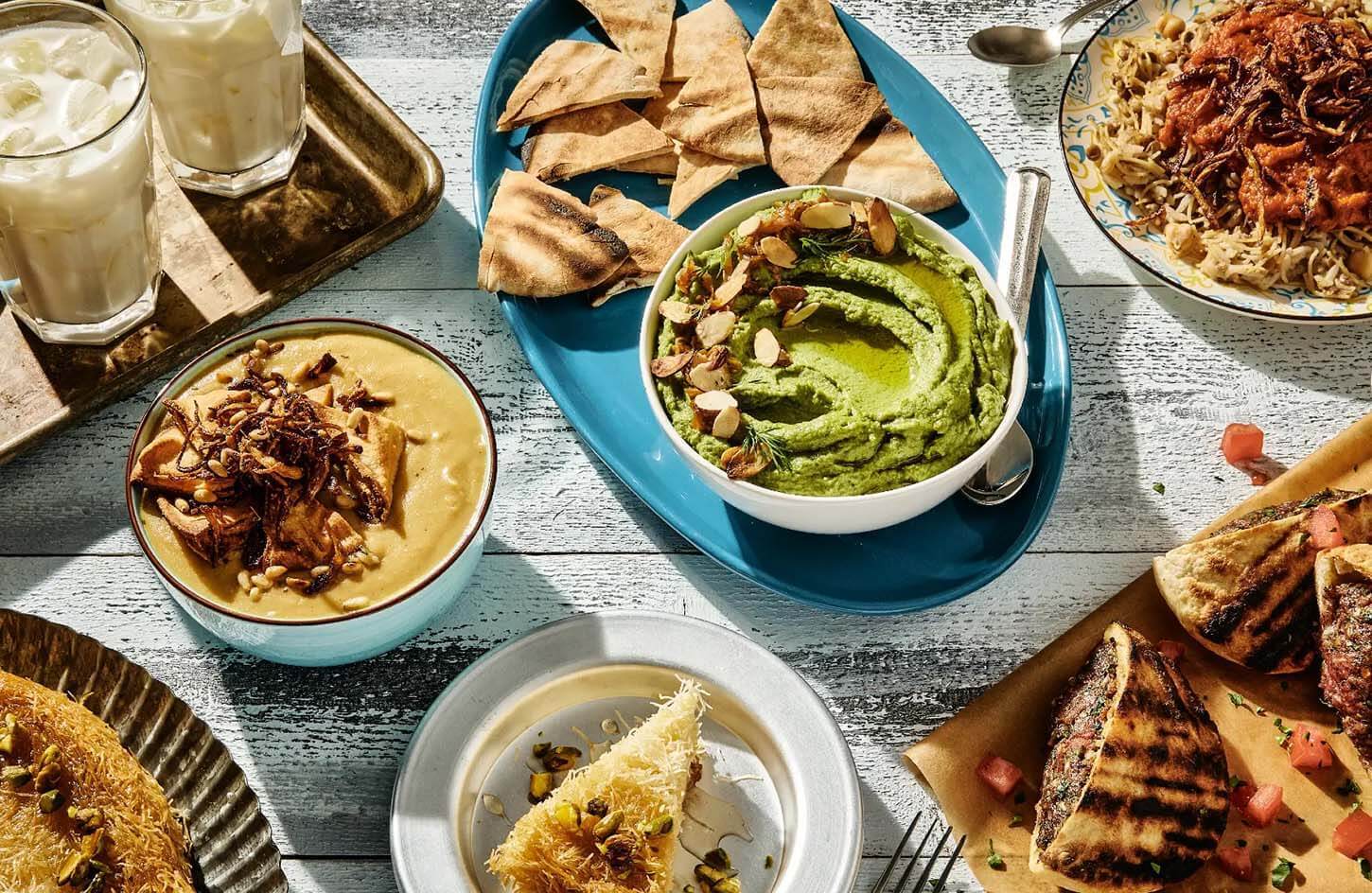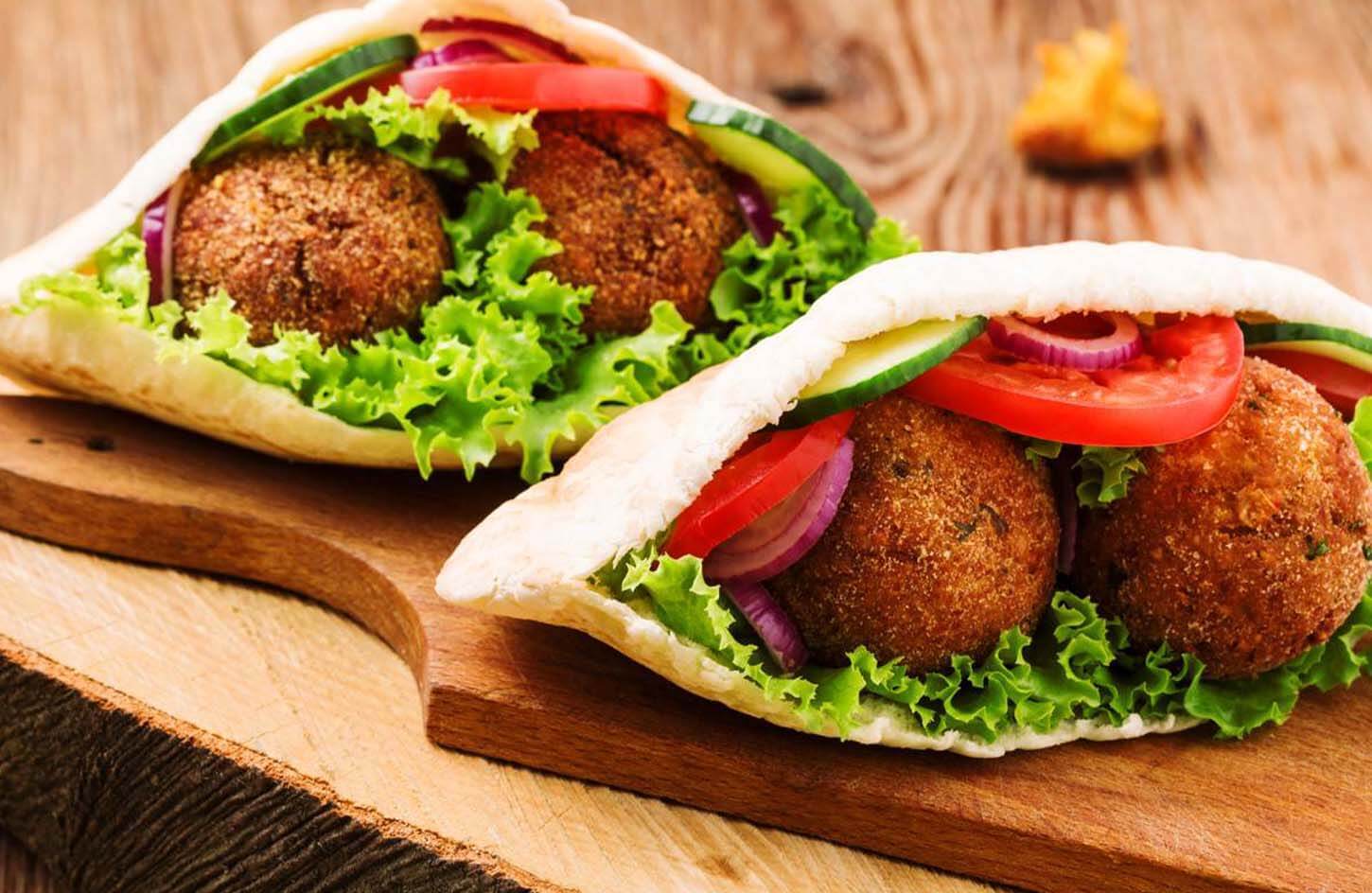Hurghada Red Sea Egypt in 2026 is one of the most dazzling and dyna...

Egyptian Cuisine is one of the oldest and most diverse in the world, shaped by centuries of history, geography, and culture. Travelers who visit Egypt often find themselves captivated not only by the pyramids and temples but also by the remarkable flavors and aromas of traditional Egyptian food.
Whether you’re sitting at a family table in Cairo, trying street food in Alexandria, or sampling dishes that trace their roots back to ancient Egyptian cuisine, the experience of eating in Egypt is both authentic and unforgettable.
For travelers wondering what is Egyptian food, the answer lies in its balance of simplicity and depth. Staples like bread, legumes, and vegetables dominate daily meals, while spices such as cumin, coriander, and garlic add richness without overwhelming the natural taste.
Beyond the basics, Egypt is also famous for its hearty stews, slow-cooked meats, and world-renowned dishes like koshari, which has become a symbol of the nation’s culinary pride.
Food in Egypt is not only nourishment but also a cultural expression. It reflects centuries of trade, conquest, and adaptation—from ancient Egyptian food cuisine based on bread, beer, and dates, to the royal Egyptian cuisine that flourished in the courts of pharaohs, to today’s vibrant mix of local and international influences.
Travelers searching for Egyptian cuisine near me will find everything from humble street stalls to high-end restaurants, offering a food journey that connects the past with the present.
This guide explores the flavors, traditions, and must-try dishes of Egypt. Whether you’re interested in egyptian cuisine recipes, hunting for the best food in Cairo, or simply curious about popular food in Egypt, you’ll discover that Egypt is not only a land of monuments but also a destination where every meal tells a story.
When we talk about ancient Egyptian cuisine, we step into a fascinating world where food was both practical and symbolic. Thousands of years ago, the Nile River’s fertile lands provided abundant grains, fruits, and vegetables that became staples of daily life.
Ancient Egyptian food cuisine centered around bread and beer, both consumed by peasants and pharaohs alike. Archaeological evidence, including tomb paintings and preserved offerings, shows how essential food was to religious and social practices.
Staples included emmer wheat and barley, which were used to make bread and beer—the lifeblood of the ancient diet. Vegetables like onions, garlic, leeks, and lettuce were common, along with fruits such as dates, figs, and pomegranates. Honey was used as a natural sweetener and is often considered one of the ancient Egypt desserts still referenced today.
Meat and fish were eaten less frequently, mostly by the elite, but poultry such as duck and goose appeared in royal Egyptian cuisine. Spices like cumin and coriander were known and used for flavoring, giving us an early glimpse of the traditional Egyptian cuisine we know today.
Interestingly, many foods enjoyed by modern Egyptians have ancient roots. Fava beans, now the star ingredient in ful medames, were widely cultivated. Lentils and chickpeas, both common in Egyptian dishes, also date back to pharaonic times. Even sweets were valued, with honey cakes and date-based treats resembling today’s Egyptian sweets.
For travelers, exploring the legacy of ancient food adds depth to their journey. Visiting temples and tombs in Luxor or Saqqara isn’t just about seeing history—it’s also about imagining what people ate thousands of years ago.
When you taste traditional Egyptian food today, you’re not just enjoying a meal; you’re experiencing a tradition that connects you directly with ancient civilizations.
Modern traditional Egyptian food is hearty, flavorful, and affordable, making it a highlight for travelers. The cornerstone of the cuisine is bread, particularly baladi bread, which resembles pita and is served with nearly every meal. This bread often accompanies dips, stews, and meats, acting as both utensil and staple.
One of the most popular foods in Egypt is ful medames, a dish of slow-cooked fava beans often eaten for breakfast with olive oil, lemon, and spices. Equally famous is ta’ameya, Egypt’s version of falafel made from fava beans instead of chickpeas. These two dishes form the backbone of daily life in Egypt, beloved by locals and intriguing for visitors.
Another essential dish is molokhia, a green soup made from jute leaves, cooked with garlic and coriander, and often served with rice or bread. Though its texture is unique, it remains one of the most traditional and common foods in Egypt.
For those who love hearty meals, mahshi (stuffed vegetables with rice and herbs) is a must-try, while grilled meats like kebabs and kofta showcase Egypt’s love for charcoal-grilled flavors.
Street food is also an inseparable part of the culture. Dishes like hawawshi (minced meat in bread) and koshari—a mix of pasta, lentils, chickpeas, rice, and fried onions topped with spicy tomato sauce—are both affordable and filling.
The latter, in particular, is considered the national dish, with locals often debating which restaurant serves the best koshari in Cairo. Many travelers flock to Abou Tarek Koshary Cairo, one of the city’s most famous spots.
These Egyptian dishes reflect a blend of tradition and practicality. They are made with local ingredients, designed to satisfy, and meant to be shared. If you’re wondering what is Egyptian cuisine, it’s this ability to create comfort and flavor from simple ingredients that defines it. For travelers on a food safari in Egypt, sampling these dishes is as essential as visiting the pyramids.

For travelers, one of the most exciting parts of visiting Egypt is tasting the popular food in Egypt that locals enjoy daily. These dishes are more than just meals; they are cultural markers that reveal the country’s history and diversity. If you are wondering what is Egyptian food, the answer lies in this blend of comfort, heritage, and flavor.
Koshari tops the list of must-try foods. Often referred to as the national dish, it’s a unique combination of rice, pasta, lentils, chickpeas, and fried onions, topped with spicy tomato sauce.
While it may sound unusual, its mix of textures and flavors has made it a beloved favorite for generations. Restaurants like Abou Tarek Koshary Cairo are renowned for serving some of the best koshari in Cairo.
Equally popular is shawarma, a Middle Eastern dish that Egyptians have made their own. Served in pita bread with garlic sauce, it’s a quick meal you’ll find in nearly every city. Then there’s fiteer meshaltet, often called Egyptian pizza, with flaky layers of dough filled with either savory ingredients like cheese and meat or sweet fillings like honey and sugar.
Seafood lovers will enjoy Alexandria Egypt food, particularly fresh grilled fish, calamari, and shrimp. The Mediterranean influence on Alexandria makes its cuisine distinct, with flavors that differ from the rest of Egypt. Cairo dishes, on the other hand, focus heavily on hearty stews, grilled meats, and street snacks.
Don’t miss Egyptian snacks like roasted chickpeas, lupin beans, or even candy in Egypt, which ranges from traditional sweets to modern adaptations. Travelers with a sweet tooth should explore Egyptian candy and Egyptian sweets, from nut-filled pastries to sugar-coated delights.
For tourists who love exploring culture through taste, trying the best food in Cairo Egypt or sampling the best food of Egypt in markets and street stalls can be as memorable as visiting the pyramids. Eating in Egypt is not just about filling your stomach—it’s about engaging with local traditions and discovering flavors that you won’t find anywhere else.
Walking through the streets of Cairo, Giza, or Alexandria, travelers quickly notice the aromas of Cairo street food filling the air. Street vendors are an essential part of Egyptian food culture, offering affordable and flavorful meals for everyone. For many visitors, tasting street food is an adventure—a chance to immerse themselves in daily life while enjoying some of the best food to eat in Egypt.
The star of Egyptian street food is undoubtedly koshari, which has entire restaurants dedicated to it, but is also served at small kiosks. Alongside it, you’ll find ta’ameya (Egyptian falafel), freshly fried and stuffed into baladi bread with salad and tahini. These quick bites are perfect for travelers exploring busy city streets.
Hawawshi, another street favorite, consists of minced meat mixed with onions and spices, stuffed into bread, and baked until crispy. It’s hearty, affordable, and full of flavor. Then there’s foul (ful medames)—a humble fava bean stew that locals enjoy morning, noon, and night. For many Egyptians, no day feels complete without it.
If you want to try something truly authentic, sample cairo traditional food like grilled liver sandwiches, sold at small stands in downtown Cairo. These may not be for everyone, but adventurous travelers often find them delicious.
Dessert stalls are equally tempting. Vendors sell Egyptian sweets like zalabya (fried dough balls with syrup) and basbousa (semolina cake soaked in syrup). For a refreshing treat, try freshly squeezed sugarcane juice—a favorite among locals.
Eating street food in Egypt is safe if you follow some simple rules: choose busy vendors, watch how food is prepared, and eat what locals are eating. The experience is more than just eating—it’s about connection. As you bite into a cairo koshary or sip fresh juice, you’re joining millions of Egyptians who enjoy these same flavors daily.
For many travelers, street food becomes one of the most memorable parts of the trip. It’s inexpensive, filling, and offers a deeper look into Egyptian life. From cairo famous food stalls to hidden neighborhood vendors, street food is where Egypt’s culinary heart beats strongest.

No culinary journey in Egypt is complete without indulging in Egyptian sweets and desserts in Egypt. These treats are as much a part of daily life as savory dishes and are deeply tied to cultural celebrations, religious holidays, and family traditions. Travelers often find that desserts in Egypt reflect the same mix of simplicity and richness that defines the cuisine as a whole.
One of the most famous is basbousa, a semolina cake soaked in sugar syrup, often topped with almonds or coconut. Another is konafa, made from shredded pastry dough layered with cream, nuts, or sweet cheese, and baked to golden perfection. During Ramadan, konafa becomes a centerpiece dessert, with families experimenting with creative variations.
Another classic is baklava, a pastry of layered phyllo dough filled with nuts and sweetened with honey or syrup. Though common across the Middle East, Egypt has its own version that is lighter and often flavored with cinnamon or clove. Zalabya, small fried dough balls coated in syrup, are a popular street sweet, especially in Cairo.
For those curious about ancient Egypt desserts, honey and dates were the primary sweeteners thousands of years ago. Modern treats like date-filled cookies, known as kahk, carry on this legacy and are especially popular during Eid. Travelers seeking the best desserts in Egypt should head to Cairo bakeries or sweet shops, where rows of colorful confections tempt both locals and tourists.
If you’re exploring Alexandria, don’t miss specialties unique to the Mediterranean coast, where Greek and Levantine influences blend with local Egyptian tastes. Whether it’s syrup-soaked pastries or creamy puddings, Alexandria has a reputation for some of the best Egypt food when it comes to sweets.
For many visitors, tasting candy in Egypt is also an adventure. From traditional sesame bars to modern chocolate brands, Egyptian candy shops are full of surprises. Travelers often buy Egyptian snacks and sweets as souvenirs, taking a piece of their culinary journey back home.
Desserts in Egypt are more than just food—they’re part of hospitality and celebration. Sharing a plate of Egyptian sweets with new friends or enjoying konafa after a meal is a cultural experience that connects you to the warmth of Egyptian traditions.
Egypt is a vast country, and its cuisine varies depending on the region. For travelers, tasting local specialties in each city is as important as visiting its monuments. From the bustling streets of Cairo to the Mediterranean coast of Alexandria and the Nile-side villages of Upper Egypt, each region adds its own character to Egyptian cuisine food.
Cairo foods are hearty and diverse, reflecting the capital’s role as a melting pot of cultures. Here, you’ll find everything from cairo koshary shops to street stalls selling liver sandwiches, to upscale restaurants serving grilled meats and traditional stews. Cairo is also where you’ll find the widest variety of Egyptian dishes, making it a perfect place for travelers to begin their culinary exploration. For those seeking the best Egyptian food in Cairo, popular spots like Abou Tarek for koshari or local grills for kofta are unmissable.
On the Mediterranean coast, Alexandria Egypt food emphasizes seafood. Fresh fish, shrimp, and calamari are often grilled with lemon and garlic, giving Alexandria a distinct flavor profile. Travelers who love seafood will find Alexandria to be the best city for trying unique takes on traditional Egyptian cuisine. Many locals recommend dining near the Corniche, where the sea breeze adds to the experience.
In Upper Egypt, where traditions remain strong, food tends to be simpler and more closely tied to ancient practices. Meals often include common foods in Egypt like lentils, beans, and bread, but with regional twists. Grilled pigeon, known as hamam mahshi, is a delicacy often enjoyed during special occasions.
Travelers seeking food safari Egyptian cuisine adventures will also find Bedouin-inspired meals in desert oases. Dishes here often involve lamb, rice, and flatbread cooked over open fires, providing a rustic and memorable experience.
Whether you’re in Cairo exploring cairo traditional food, enjoying desserts in Egypt along the Mediterranean, or sampling grilled meats in Luxor, each region tells its own culinary story. For tourists, this regional diversity ensures that every stop on their journey brings new flavors, making eating in Egypt a discovery that never feels repetitive.
While Egypt proudly maintains its culinary traditions, the modern dining scene reflects globalization and fusion. Travelers who crave variety will find that Egyptian cuisine easily blends with international flavors, making the country a haven for both traditionalists and adventurous eaters.
Cairo and Alexandria, being cosmopolitan cities, are hubs for international dining. You can find American food in Egypt such as burgers, fried chicken, and pizza at both global chains and local eateries. Italian, Chinese, and Indian restaurants are also widespread, catering to diverse tastes. These offerings make it easy for travelers to alternate between traditional Egyptian food and global comfort foods.
But what makes the dining scene truly interesting is the rise of fusion cuisine. Many chefs experiment by blending local ingredients with international techniques. For example, modern restaurants in Cairo serve sushi rolls stuffed with falafel or burgers topped with tahini. Even desserts get creative, with konafa layered with Nutella or lotus cream, blending Egyptian classics with global trends.
One of the unique phenomena is the appearance of food trucks, including the royal Egyptian cuisine food truck, which offers traditional dishes with a modern twist. These mobile eateries have become popular among young Egyptians and curious tourists alike. For those searching for Egyptian cuisine near me, these trucks often pop up in urban hotspots, providing an easy way to try local flavors in a casual setting.
The influence of tourism also plays a role. Many restaurants in Luxor, Aswan, and Sharm El Sheikh design menus that balance foods in Egypt with Western favorites, ensuring international travelers feel comfortable. Still, the majority encourage visitors to try authentic Egyptian cuisine dishes, even if paired with familiar items.
For travelers, this blend of tradition and modernity makes food exploration even richer. You can enjoy the best food in Cairo Egypt one day, then sample an innovative fusion dish the next. Egypt’s culinary scene shows that while traditions remain strong, creativity and global influence continue to shape the way Egyptians eat today.
For travelers, understanding not just egyptian food cuisine but also the culture surrounding meals adds depth to the experience. Food in Egypt is never just about eating—it’s about community, hospitality, and tradition.
Meals are often social occasions. Families gather around large platters, and sharing food is a sign of warmth. Bread, particularly baladi bread, is used as an edible utensil, scooping up dips, beans, and stews. For tourists, joining an Egyptian family meal provides insight into the heart of local culture.
Hospitality is another important element. Offering food and drink to guests is a deeply rooted tradition. Refusing without a polite reason is often seen as impolite. For travelers, accepting even small offerings of tea or snacks is a way of showing respect and building connections.
Religious practices also influence dining. During Ramadan, for example, Egyptians break their fast with dates and soup before enjoying a full meal, often featuring traditional Egyptian cuisine dishes. For visitors, experiencing an iftar meal can be one of the most memorable cultural highlights of the trip.
In restaurants, tipping is customary, usually around 10–15%. Street food vendors may not expect tips, but rounding up the price is appreciated. When eating with locals, using your right hand is considered proper etiquette, especially for shared dishes.
Another interesting aspect is the seasonal nature of some foods. Certain Egyptian sweets, like kahk (cookies) or konafa variations, appear mainly during religious festivals. Travelers lucky enough to visit during these times can experience flavors not always available year-round.
Understanding what is Egyptian cuisine also means recognizing its role in social identity. Food connects generations and regions, and Egyptians take pride in offering travelers a taste of their homeland. Eating in Egypt, therefore, is more than a necessity—it’s an invitation into the culture itself.
For tourists exploring food in Egypt for tourists, being mindful of these cultural elements enriches the journey. It transforms a meal from something to simply enjoy into an experience of respect, learning, and shared joy.

For travelers, exploring food in Egypt for tourists is both exciting and reassuring. The country’s cuisine is approachable, affordable, and widely available, making it easy for visitors to enjoy authentic meals without difficulty. Still, a few tips can help travelers make the most of their culinary journey.
First, safety is often a concern. Egyptian street food is delicious, but tourists should choose vendors that are busy with locals—this is the best sign of freshness and quality. Drinking bottled water is recommended, and many visitors prefer to avoid raw salads unless they’re dining in reputable restaurants. By taking simple precautions, travelers can confidently enjoy cairo street food, grilled seafood in Alexandria, or sweets from local bakeries.
Second, affordability is one of the best surprises about food in Egypt. Even in large cities like Cairo, you can find hearty meals for just a few dollars. Dishes like ful medames, ta’ameya, and koshari are not only staples of traditional Egyptian food but also budget-friendly, making them ideal for travelers looking to stretch their spending.
Third, variety is key. Egypt offers much more than the famous dishes. Exploring regional specialties—like fresh fish in Alexandria, stuffed pigeons in Luxor, or Bedouin lamb dishes in the desert—provides a fuller picture of Egyptian cuisine dishes. Trying both street food and restaurant meals ensures travelers taste the country’s diversity.
Finally, remember that food is part of the travel experience. Many tourists focus solely on monuments and landscapes, but those who take the time to enjoy Egyptian cuisine recipes and sweets often say these flavors are some of their strongest memories. Whether you’re savoring cairo famous food, sharing tea with locals, or enjoying desserts Egypt during Ramadan, every meal becomes a story to take home.
Travelers who plan ahead, stay adventurous, and embrace local dining etiquette will find that eating in Egypt is not just enjoyable but unforgettable. The combination of affordability, flavor, and culture makes Egyptian food one of the highlights of any trip.
So, what is Egyptian cuisine, and why should it matter to travelers? Simply put, it is a living history book, written in flavors, spices, and traditions. For anyone planning a trip, egyptian food cuisine offers a unique way to connect with the country beyond its monuments and landscapes.
The diversity of Egyptian dishes means there is something for every taste. Vegetarians will love ful, ta’ameya, and molokhia, while meat lovers can enjoy kofta, shawarma, and grilled pigeon. Those with a sweet tooth can indulge in basbousa, konafa, and Egyptian candy. Whether you prefer hearty comfort food or delicate desserts, foods in Egypt never fail to impress.
Another reason is accessibility. Unlike some cuisines that may feel intimidating to outsiders, traditional Egyptian cuisine is approachable and easy to enjoy. Most dishes are made with familiar ingredients—rice, beans, vegetables, bread—but seasoned and prepared in ways that feel exciting and new. This balance of comfort and adventure makes Egyptian food particularly attractive for tourists.
Cultural richness also plays a role. Every dish, from ancient Egyptian cuisine to modern fusion plates, carries layers of meaning. Eating a bowl of koshari in Cairo is not just about filling your stomach; it’s about participating in a culinary tradition that unites millions of Egyptians every day. Sampling seafood in Alexandria connects travelers with Mediterranean influences, while trying ancient Egypt desserts like honey-and-date treats ties you back to a civilization thousands of years old.
Finally, food adds joy and authenticity to travel. Landmarks may impress, but meals create memories. Asking locals where to find the best food Egypt has to offer often leads to personal recommendations, warm conversations, and genuine cultural exchanges. Travelers who make food part of their itinerary discover that Egyptian hospitality is as rich as its history.
For these reasons, royal Egyptian cuisine, street food, and everyday home meals should all be on your bucket list. Egypt is not only a land of pyramids and temples—it’s a land where food is storytelling, history, and community, served fresh on every plate.

Egypt is often celebrated for its ancient wonders, but for travelers, Egyptian cuisine is just as remarkable. From the roots of ancient Egyptian food cuisine to the lively flavors of cairo street food, each dish reveals a piece of the nation’s identity. Whether you’re savoring traditional Egyptian food, exploring cairo foods, or indulging in desserts Egypt, the culinary experience is as essential as visiting the pyramids or cruising the Nile.
For tourists asking what is Egyptian food, the answer is simple: it’s food that nourishes the body and soul while connecting you to thousands of years of history. It’s the comfort of ful, the celebration of konafa, the pride of koshari, and the hospitality of a shared table.
Travelers who embrace food in Egypt discover that meals are not just about taste—they are invitations into the culture itself. Every bite tells a story, every street stall holds a memory, and every dessert carries a tradition.
So, whether you’re planning your first trip or returning to explore new flavors, let Egyptian cuisine food be part of your journey. It’s more than just a meal—it’s Egypt’s story, waiting to be tasted.
We offer tours to Egypt’s most famous destinations such as the Pyramids and Sphinx in Giza, Karnak Temple and Luxor, Valley of the Kings, Sharm El Sheikh and Hurghada for beaches and diving, and Alexandria.
We provide organized tours, luxury hotel and resort bookings, comfortable transportation services, experienced tour guides, and activity ticket bookings such as diving, desert safaris, and Nile cruises.